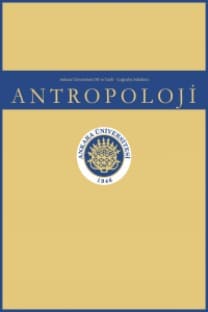Dünya Sağlık Örgütü ve Asya-Pasifik endeksleri ile karşılaştırılan Türkiye beden kitle endisi kesim noktaları için öneri
Türkiye-BKİ, Yaşa Bağlı BKİ Boy Uyarlaması, DSÖ-BKİ, Asya-Pasifik BKİ, Antropometri.
Proposed Turkish body mass index cut-off points compared with the World Health Organization and Asia-Pacific indices
___
- Bogin, B., & Varela Silva, I. (2012). The body mass index: The good, the bad, and the horrid. Bulletin de la Societe Suisse d’Anthropologie, 18(2), 5-11. https://hdl.handle.net/2134/14017
- Erem, C. (2015). Prevalence of overweight and obesity in Turkey. IJC Metabolic & Endocrine, 8, 38-41. https://doi.org/10.1016/j.ijcme.2015.07.002
- Flegal, K. M., Ioannidis, J. P. A, & Doehner W. (2019). Flawed methods and inappropriate conclusions for health policy on overweight and obesity: The Global BMI Mortality Collaboration meta-analysis. Journal of Cachexia, Sarcopenia and Muscle, 10(1), 9-13. https://doi.org/10.1002/jcsm.12378
- Gluckman, P. D., Hanson, M. A., Morton, S. M. B., & Pinal, C. S. (2005). Life-long echoes-A critical analysis of the developmental origins of adult disease model. Neonatology, 87(2), 127-139. https://doi.org/10.1159/000082311
- Gültekin, T., & Akın, G. (2005). Yaşlanmayla birlikte boy uzunluğu ve oturma (büst) yüksekliğinde meydana gelen değişimler. Turkish Journal of Geriatrics, 8(3), 123-128. https://geriatri.dergisi.org/abstract.php?id=268
- Gültekin, T., Özer, B. K., Akın, G., Bektaş, Y., Sağır, M., & Güleç, E. (2009). Prevalence of overweight and obesity in Turkish Adults. Anthropologischer Anzeiger, 67(2), 205-212. https://doi.org/10.1127/0003-5548/2009/0022
- Hatemi, H., Yumuk, V. D., Turan, N., Arik, N. (2003). Prevalence of overweight and obesity in Turkey. Metabolic Syndrome and Related Disorders, 1(4), 285-90. https://doi.org/10.1089/1540419031361363
- Jestratijevic, I., Rudd, N. A., & Ilic, S. (2020). A body to die for: Body measurements and BMI values among female and male runway models. Clothing and Textiles Research Journal. https://doi.org/10.1177/0887302X20968893
- Knai, C., Suhrcke, M., & Lobstein, T. (2007). Obesity in Eastern Europe: An overview of its health and economic implications. Economics & Human Biology, 5(3), 392-408. https://doi.org/10.1016/j.ehb.2007.08.002
- Kodama H. (2010). Problems of underweight in young females and pregnant women in Japan. Japan Medical Association Journal, 53(5), 285-289. https://www.med.or.jp/english/journal/pdf/2010_05/285_289.pdf
- Lim, J. U., Lee, J. H., Kim, J. S., Hwang, Y. I., Kim, T., Lim, S. Y., Yoo, K. H., Jung, K. S., Kim, Y. K., Rhee, C. K. (2017). Comparison of World Health Organization and Asia-Pacific body mass index classifications in COPD patients. International Journal of Chronic Obstructive Pulmonary Disease, (12), 2465-2475. https://doi.org/10.2147/COPD.S141295
- Martin, J. B. (2010). The development of ideal body image perceptions in the United States. Nutrition Today, 45(3), 98-110. https://doi.org/10.1097/NT.0b013e3181dec6a2
- NCD Risk Factor Collaboration (NCD-RisC). (2017). Worldwide trends in body-mass index, underweight, overweight, and obesity from 1975 to 2016: a pooled analysis of 2416 population-based measurement studies in 128·9 million children, adolescents, and adults. Lancet, 390(10113), 2627-2642. https://doi.org/10.1016/S0140-6736(17)32129-3
- Nuttal, F. Q. (2015). Body mass index obesity, BMI, and health: A critical review. Nutrition Today, 50(3), 117-128. https://doi.org/10.1097/NT.0000000000000092
- Ogden, C. L., Carroll, M. D., & Flegal, K. M. (2014). Prevalence of obesity in the United States. JAMA, 312(2), 189-190. https://doi.org/10.1001/jama.2014.6228
- Painter, R. C., Roseboom, T. C., & Bleker, O. P. (2005). Prenatal exposure to the Dutch famine and disease in later life: an overview. Reproductive Toxicology, 20(3), 345-352. https://doi.org/10.1016/j.reprotox.2005.04.005
- Ronnenberg, A. G., Wang, X., Xing, H., Chen, C., Chen, D., Guang, W., Guang, A., Wang, L., Ryan, L., & Xu, X. (2003). Low preconception body mass index is associated with birth outcome in a prospective cohort of Chinese women. The Journal of Nutrition, 133(11), 3449-3455. https://doi.org/10.1093/jn/133.11.3449
- Shahvirdi, L., Gültekin, T., Alizadeh Aghdam, M. B., Acıtaş, S., & Şenoğlu, B. (2019). Obesity and body image in women and men in Iran-Tabriz. Antropoloji, (38), 37-45. https://doi.org/10.33613/antropolojidergisi.604521
- Sorkin, J. D., Muller, D. C., & Andres, R. (1999). Longitudinal change in height of men and women: implications for interpretation of the body mass index: The Baltimore Longitudinal Study of Aging. American Journal of Epidemiology, 150(9), 969-977. https://doi.org/10.1093/oxfordjournals.aje.a010106
- Türkiye İstatistik Kurumu (2021, 4 Şubat). Adrese dayalı nüfus kayıt sistemi sonuçları, 2020. Türkiye İstatistik Kurumu Haber Bülteni, 37210. https://data.tuik.gov.tr/Bulten/Index?p=Adrese-Dayali-Nufus-Kayit-Sistemi-Sonuclari-2020-37210
- Uysal, S., Aydıntuğ, Y., Aydıntuğ, S., Güngör, E., Mutlu, I., Hançar Özcan, N., Kaya Yıldırım, L., & Mercanlıgil, S. M. (2009). The relationship between number of teeth, chewing function and nutritional status in patients over 55 years of age. Türkiye Klinikleri Tıp Bilimleri Dergisi, 29(5), 1076-1084.
- Vaske, J. J., Beaman, J., & Sponarski, C. C. (2017). Rethinking internal consistency in Cronbach’s Alpha, Leisure Sciences, 39(2), 163-173. https://doi.org/10.1080/01490400.2015.1127189
- Watson, P. E., Watson, I. D., & Batt, R. D. (1979). Obesity indices. The American Journal of Clinical Nutrition, 32(4), 736-737. https://doi.org/10.1093/ajcn/32.4.736
- WHO Consultation on Obesity, & WHO. (1999/2000). Obesity: preventing and managing the global epidemic. WHO Technical Report Series, 894. https://apps.who.int/iris/handle/10665/42330
- WHO Expert Consultation. (2004). Appropriate body-mass index for Asian populations and its implications for policy and intervention strategies. Lancet, 363(9403), 157-163. https://doi.org/10.1016/S0140-6736(03)15268-3
- WHO. (1989). The health of youth. Background document: Technical discussions. A42/Technical Discussions/2, 5-7. https://apps.who.int/iris/handle/10665/172242
- Zajacova, A., &Burgard, S. A. (2010). Body weight and health from early to mid-adulthood: A longitudinal analysis. Journal of Health and Social Behavior, 51(1), 92-107. https://doi.org/10.1177/0022146509361183
- ISSN: 0378-2891
- Yayın Aralığı: 2
- Başlangıç: 1963
- Yayıncı: Ankara Üniversitesi Basımevi
Hediye üzerine sosyolojik bir değerlendirme
3 boyutlu tarayıcı kullanarak yetişkin erkek ayak biçimi analizi
Deniz LEBLEBİCİ BAŞAR, İlker AKGÜN
Erken çocukluk döneminde felsefe aracılığıyla yeni pedagoji
Kitera’ya yolculuk: Göç ve nostalji
Kafatasındaki iki üçgenden cinsiyet tahmini
Kırsalda yaşlılık: Ardahan ili örneği
Adli antropolojik delillerin toplanması ve kıymetlendirilmesi
Aylin YALÇIN SARIBEY, Elif BOSTANCI
Nesli Bilge ÖZTÜRK, Gulkizilca YURUR
Suriyelilerin yemek kültürüne kamusal alandan bakmak: Kilis örneği
Kadriye ŞAHİN, Mustafa ELBEYLİ
Rukiye DAĞALP, Doruk IPER, Bahar AKA, Sema P. AKA, Yavuz Sinan AYDINTUĞ, Itır AYDINTUĞ
